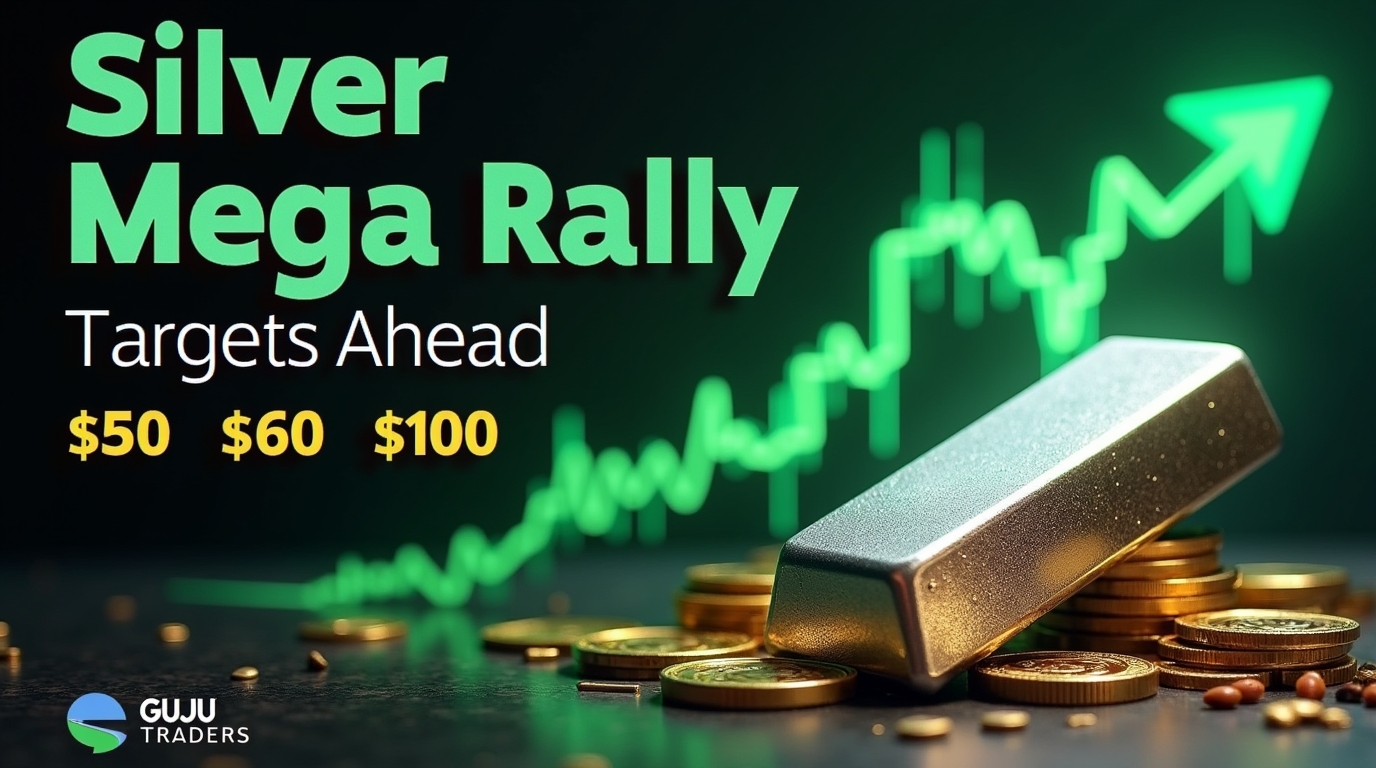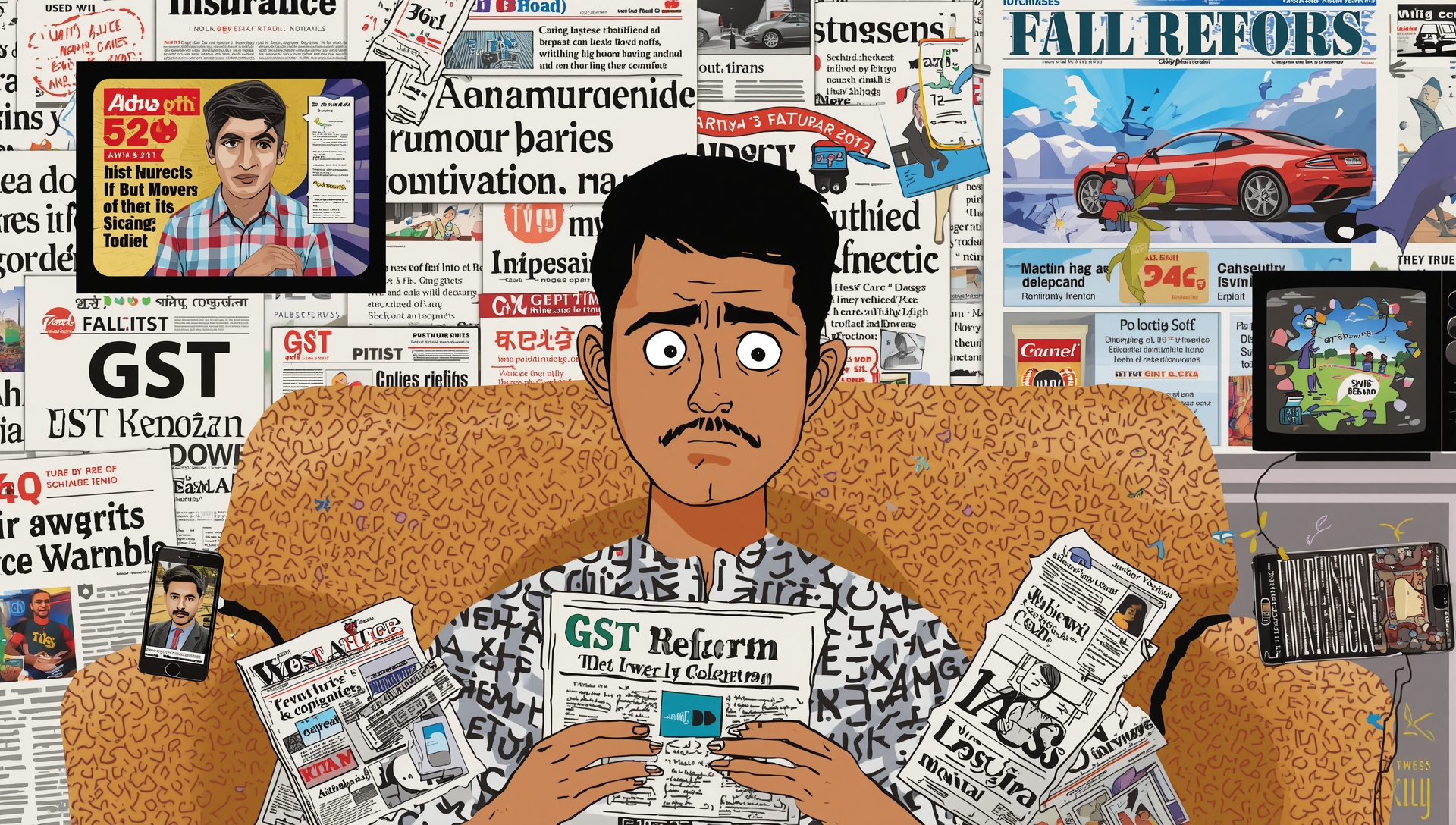Mutual Fund Investing Made Easy: Top Funds, Tax Benefits & Growth Strategies by Gujju Traders Mutual funds are one of the most popular investment options in India. Whether you’re a beginner or an experienced investor, mutual funds provide a diversified, professionally managed, and growth-oriented way to build wealth. In this guide by Gujju Traders , we’ll cover: What is a Mutual Fund? A mutual fund is an investment pool where money from multiple investors is collected to invest in stocks, bonds, gold, or other financial instruments. Fund managers professionally manage these funds to maximize returns. Learn more about mutual funds: Moneycontrol Mutual Fund Guide Types of Mutual Funds in India Mutual funds can be classified as Equity, Debt, Hybrid, Index, ELSS (Tax Saving), Solution-Oriented, and Liquid Funds. Each type suits different goals and risk profiles. 1️⃣ Equity Mutual Funds – High Risk, High Return Equity funds primarily invest in company shares, suitable for long-term growth. Top 5 Equity Funds (1-Year Returns) Fund Name Returns Nippon India Small Cap Fund 58% Quant Small Cap Fund 54% HDFC Mid-Cap Opportunities Fund 45% SBI Large & Midcap Fund 39% ICICI Prudential Technology Fund 35% Recommended by Gujju Traders: 💡 Tip: Equity funds are best for investors with higher risk tolerance aiming for long-term growth. 2️⃣ Debt Mutual Funds – Low Risk, Stable Returns Debt funds invest in bonds and fixed income instruments, offering steady and safer returns. Top 5 Debt Funds (1-Year Returns) Fund Name Returns SBI Magnum Ultra Short Duration Fund 7.5% ICICI Prudential Corporate Bond Fund 7.2% HDFC Short Term Debt Fund 6.9% Nippon India Liquid Fund 6.8% Kotak Gilt Fund 6.5% More info: Economic Times Debt Fund Section 3️⃣ Hybrid Funds – Balanced Risk Hybrid funds invest in both equity and debt, offering moderate growth with stability. Top 5 Hybrid Funds (1-Year Returns) Fund Name Returns HDFC Hybrid Equity Fund 25% ICICI Prudential Equity & Debt Fund 23% SBI Equity Hybrid Fund 22% Mirae Asset Hybrid Equity Fund 21% Canara Robeco Equity Hybrid Fund 20% 💡 Tip: Hybrid funds are suitable for beginners who want exposure to equity without high risk. 4️⃣ Index Funds & ETFs – Market Trackers Index funds track indices like Nifty 50 or Sensex, offering low-cost, passive investment options. Top 5 Index Funds (1-Year Returns) Fund Name Returns HDFC Index Fund – Nifty 50 Plan 25% UTI Nifty 50 Index Fund 24% ICICI Prudential Nifty Next 50 Fund 23% Nippon India Sensex Index Fund 22% Motilal Oswal Nifty 500 Fund 22% External Reference: NSE India ETFs & Index Funds 5️⃣ ELSS Funds – Tax Saving + Growth Equity Linked Savings Schemes (ELSS) provide tax benefits under Section 80C. Lock-in is 3 years. Top 5 ELSS Funds (1-Year Returns) Fund Name Returns Quant ELSS Tax Saver Fund 47% SBI Long Term Equity Fund 36% Axis Long Term Equity Fund 30% HDFC Tax Saver Fund 29% ICICI Prudential ELSS Fund 27% 6️⃣ Solution-Oriented Funds – Goal-Based These funds are for long-term goals like retirement or child education. Top 5 Solution-Oriented Funds (1-Year Returns) Fund Name Returns HDFC Retirement Savings Fund 22% ICICI Prudential Retirement Fund 21% SBI Child Advantage Fund 20% Tata Retirement Savings Fund 19% UTI Children’s Career Fund 18% 7️⃣ Liquid & Overnight Funds – Safe Parking Invest in short-term instruments, safer than savings accounts. Top 5 Liquid Funds (1-Year Returns) Fund Name Returns HDFC Liquid Fund 6.7% Nippon India Liquid Fund 6.6% Kotak Overnight Fund 6.4% ICICI Prudential Overnight Fund 6.3% SBI Overnight Fund 6.2% Choosing the Right Mutual Fund Investor Type Best Fund Type Why? Beginner Hybrid / Index Funds Safe, easy to start Young (High Risk) Equity / Small Cap / Defence Funds High growth potential Retired / Conservative Debt / Liquid Funds Stability Salaried ELSS Funds Save tax + grow wealth Goal-Based Solution-Oriented Funds Retirement, Education Expert Recommendations by Gujju Traders Consulting At Gujju Traders Consulting, we recommend: 💡 Pro Tip: Personalized strategies based on risk, market trends, and goals can maximize returns. FAQs on Mutual Funds Which is the safest mutual fund in India?Liquid and Overnight funds are safest. Which mutual fund gives the highest returns?Small Cap and Sectoral Funds like Defence, IT, Pharma offer highest returns but carry risk. Can I save tax with mutual funds?Yes, ELSS funds provide tax benefits under Section 80C. How much should I invest?Start with SIPs of ₹500–₹1000/month. SIP or Lump Sum?SIPs are safer for beginners and help average out costs. Final Words Mutual funds are a powerful tool to grow wealth, save taxes, and achieve financial freedom. At Gujju Traders , we guide investors with smart strategies and recommend top-performing funds like HDFC Small Cap, HDFC Defence, and Motilal Oswal Defence Fund for strong growth over the next five years. Invest smartly with Gujju Traders and maximize your wealth in the coming years!
Silver’s Mega Rally: Why the Forgotten Metal is Poised to Outshine Gold
From Solar Panels to Central Bank Vaults ‘The Big Bull Case for Silver’s Bright Future’. Introduction – The Underdog Metal Ready to Shine For decades, silver has lived in the shadow of gold – often called “poor man’s gold.” But the tide is turning. In September 2025, silver is trading around $44 per ounce (₹1,42,000 per kg in India), showing signs of a historic breakout. Meanwhile, gold stands tall at $3,775 per ounce (₹7,20,000 per 10 grams in India). At Gujju Traders, we believe silver is gearing up for a long-term mega rally not just as a safe-haven metal but as an industrial powerhouse. Let’s break down why silver is set to shine brighter than ever. 1. The Gold vs Silver Ratio – The Hidden Key to Wealth One of the most powerful indicators in the metals market is the Gold-to-Silver Ratio (GSR) — how many ounces of silver are needed to buy one ounce of gold. 📌 Layman Explanation: Think of two friends — Gold (the star) and Silver (the quiet partner). For years, silver has been undervalued compared to gold. When the balance corrects, silver doesn’t just walk — it sprints. This mispricing is one of the biggest bullish signals today. Every time the ratio narrows, silver rallies massively, as seen in the 1970s bull run and the 2011 rally when silver touched $50. 2. Central Banks and Silver Shortage – The Sleeping Giant Traditionally, central banks only stocked gold. But now, there are discussions of central banks planning to take physical delivery of silver due to growing shortages. If central banks enter the silver market even slightly, the demand shock could skyrocket prices. 📌 Layman Analogy: Imagine if the RBI and Federal Reserve suddenly started buying onions during shortage season. Prices would go crazy. That’s the kind of wave silver could face. 3. Silver in Solar Energy – The Green Gold Rush 🌞 Silver isn’t just about jewelry or coins it’s the heart of the solar revolution. 👉 This means millions of panels = thousands of tonnes of silver demand. 📌 Layman View: Every time you see a new solar park, remember it’s literally built on silver. 4. Silver in Semiconductors – Powering the Tech World ⚡ Silver is the best conductor of electricity, making it critical for: Demand from these sectors is growing exponentially. As technology expands, silver’s industrial role becomes irreplaceable. 5. The Silver Deficit – Supply Can’t Keep Up For the past five consecutive years, silver has been in a supply deficit — meaning global demand exceeds mine supply. 📌 Layman Analogy: It’s like having a fridge that stocks 10 bottles of water daily but the family consumes 15. Slowly, the shortage builds up. That’s silver today. 6. Price Outlook – The Road Ahead 🚀 Given all these factors, Gujju Traders projects the following possible targets: This aligns with silver’s historical surges after long consolidation periods. 7. Why Silver Could Outperform Gold While gold will remain a safe-haven king, silver has a dual advantage: That’s why silver could rally sharper and faster than gold in the coming years. Conclusion – Gujju Traders View At Gujju Traders, we believe silver is not just a metal – it’s a mega opportunity. The gold-silver ratio imbalance, solar and tech demand, central bank interest, and ongoing supply deficits all point toward a historic bull run. ✨ Punch Line: “Silver isn’t just shining it’s blazing the path to the future.” Investors who recognize this trend early could ride one of the biggest wealth-creation waves of this decade. Gujju Traders Research Team
$100,000 H-1B Fee Shock: Indian IT Giants Brace for Profit Crunch
Economic impact of the new H-1B proclamation (US$100,000 annual fee) on Indian IT firms company-wise estimated annual cost and likely business impact Introduction The United States has recently announced a new $100,000 annual fee on H-1B visas (for certain categories). The H-1B visa is crucial for Indian IT companies, as it allows them to send skilled engineers to work onsite for U.S. clients. For decades, this model has powered the growth of Indian IT giants TCS, Infosys, Wipro, HCLTech, and LTIMindtree. But now, this sudden hike in visa fees will create huge additional costs, potentially reducing profit margins and changing how these companies operate. This report breaks down the impact company-wise, explains the risks, and gives a Gujju Traders perspective on what lies ahead. Company-wise Impact Analysis To understand the effect, let’s look at how many H-1B visas each major Indian IT company received in FY25, and how much extra cost this new law adds. Estimated Additional Costs Company Approx. H-1B Approvals (FY25) Extra Cost in USD (millions) Extra Cost in INR (crores) FY25 Revenue (INR crores) Cost Impact % of Revenue TCS 5,364 $536.4 M ₹4,726 Cr ₹2,65,886 Cr ~1.8% Infosys 2,004 $200.4 M ₹1,766 Cr ₹1,69,857 Cr ~1.0% HCLTech 1,728 $172.8 M ₹1,522 Cr ₹1,17,055 Cr ~1.3% LTIMindtree 1,807 $180.7 M ₹1,592 Cr ₹38,008 Cr ~4.2% Wipro (est.) ~1,500 $150.0 M ₹1,321 Cr ₹89,090 Cr ~1.5% (Conversion rate: $1 = ₹88.1, Approximate values) What These Numbers Mean Sector-wide Implications Comparison of Impact Category Big IT Giants (TCS, Infosys, HCL) Mid-tier Firms (LTIMindtree, Mphasis, etc.) Revenue Base Very high (₹1–2.5 lakh crore) Moderate (₹30–40,000 crore) % Impact 1–2% of revenue 3–5% of revenue Survival Ability Strong – can absorb costs, renegotiate Weaker – may lose margins, competitiveness Long-term Strategy More U.S. local hiring + automation Aggressive offshoring, cost-cutting Gujju Traders View Gujju Punchline “Amrika na visa na nava niyamo IT sector ma tufaan laavše – mota players sambhāli laavše, pan nana-mota firmo ma margin no maari padše.” (The new U.S. visa rules will shake the IT sector – big players will manage, but smaller firms will feel a margin squeeze.)
How to Invest in Gold and Silver Through SIP and ETFs
Turn Every SIP Into Gold (and Silver): The Complete Investment Guide In India, gold and silver are not just precious metals—they are symbols of wealth, security, and prosperity. Traditionally, people invested in physical gold and silver (like jewelry, coins, or bars). But today, with financial markets evolving, you can invest in these metals digitally through SIP (Systematic Investment Plan) and ETFs (Exchange Traded Funds). If you are a trader or investor looking for long-term wealth creation, here’s your detailed guide. Why Invest in Gold and Silver? What is SIP in Gold and Silver? A SIP (Systematic Investment Plan) allows you to invest a fixed amount every month in gold or silver funds, just like you do with mutual funds. Top Gold ETFs in India (2025) ETF Name 1-Year Return 3-Year CAGR Expense Ratio Taxation Nippon India Gold ETF ~16% ~11% 0.75% Capital gains tax* HDFC Gold ETF ~15% ~10.5% 0.55% Capital gains tax* SBI Gold ETF ~15.8% ~10.8% 0.75% Capital gains tax* ICICI Prudential Gold ETF ~16% ~11% 0.50% Capital gains tax* 📌 Taxation on Gold ETFs: Top Silver ETFs in India (2025) ETF Name 1-Year Return Since Launch (CAGR) Expense Ratio Taxation Nippon India Silver ETF ~25% ~18% 0.40% Same as gold ETFs* ICICI Prudential Silver ETF ~24% ~17% 0.45% Same as gold ETFs* Aditya Birla Sun Life Silver ETF ~23% ~16% 0.45% Same as gold ETFs* HDFC Silver ETF ~24% ~17% 0.50% Same as gold ETFs* Taxation on Silver ETFs: SIP vs ETF – Which is Better? Feature SIP (via Mutual Fund FoFs) ETF (Exchange Traded Fund) Ease of Investment Very easy, no Demat required Needs Demat + Trading account Investment Amount Start as low as ₹500 1 unit (linked to metal price) Flexibility Auto-debit every month You buy/sell manually Liquidity Redeem anytime from AMC Traded on stock exchange Best For Beginners Active traders, experienced investors Which Should You Choose? Key Tips Before Investing Final Thoughts for Gujju Traders Gold and Silver are not just emotional assets for Indians, they are powerful investment tools. By using SIP and ETFs, you can build wealth steadily, avoid storage risks, and take advantage of price appreciation. 👉 For long-term investors: Start a Gold or Silver SIP.👉 For traders: Keep an eye on ETFs for short-term opportunities.👉 For zero-tax benefits: Consider Sovereign Gold Bonds (SGBs). With inflation, global uncertainty, and industrial demand, adding Gold and Silver in your portfolio is a smart move in 2025 and beyond.
Urban Company IPO 2025: Can It Be the Next Zomato? Complete Analysis for Investors
Urban Company IPO 2025: From Homes to Dalal Street – The Next Big Tech Story? Urban Company (formerly UrbanClap) is set to launch its ₹1,900 crore IPO between September 10–12, 2025, and it’s already creating a buzz in Dalal Street. Known as India’s largest tech-enabled home services platform, the company has transformed how urban households book services from beauty and grooming to cleaning, plumbing, and appliance repair. But the big question for investors is: Can Urban Company be the next Zomato on the stock market? Let’s dive into the company’s past, present, future, core investors, exits, IPO details, and Zomato-style comparison. The Journey: From UrbanClap to Urban Company The Present: IPO Buzz & Profitability Urban Company is now operational in 51 Indian cities and expanding internationally in UAE and Singapore. Financial Highlights (FY25) IPO Details Grey Market Premium (GMP) Who’s Exiting in the IPO? Founders’ Secondary Exit Major Investors in OFS (₹1,428 crore) Pre-IPO Secondary Deals (₹500 crore) Core Investors & Shareholding (Pre-IPO) Investor Stake (%) Elevation Capital 10.84% Accel India 10.5% VYC11 Ltd 9.18% Prosus 6.8% Steadview Capital 6.8% Bessemer India 6.46% Tiger Global 4.73% Founders (combined) ~20% 👉 Note: Kunal Bahl and Rohit Bansal (Snapdeal founders) were early investors via Titan Capital in 2015, but fully exited in July 2024 with a 200x return (₹57 lakh → ₹111 crore). The Future: Opportunities & Challenges Growth Drivers Challenges Urban Company vs Zomato: A Comparison Factor Zomato (IPO 2021) Urban Company (IPO 2025) Business Model Food delivery marketplace Home services marketplace Profitability Loss-making at IPO Profitable in FY25 Brand Recall Strong (food = Zomato) Growing (services = UrbanCo) Competition Swiggy, ONDC, hyperlocals Mostly unorganized sector Global Play Retreated from int’l markets Expanding in UAE, Singapore Valuation Risk High, post-IPO correction High P/E, but backed by profits Can Urban Company Be the Next Zomato? If it can scale profitably while keeping gig workers engaged, Urban Company could become India’s first large listed profitable gig-economy stock—something Zomato is still chasing. Final Takeaway Urban Company’s IPO is a milestone in India’s consumer tech IPO journey. With strong brand equity, profitability, and global ambitions, it is well-positioned for growth. However, investors must balance enthusiasm with caution due to high valuations and execution risks. For retail investors and Gujju Traders community: Urban Company may not just be the next Zomato—it could be an even stronger story if it sustains profitable growth.
Why the market is still there even after GST reform?
Insurance is free, Automobile became cheaper, FMCG is also cheap now. So what is the truth? Where did the TV and Media trap you? Let’s look at insurance industry where GST was reduced from 18% to 0%. I also felt positive about it but now the company has no input tax credit available. Earlier, we used to pay tax and we would take credit for it. Now credit has stopped, so their interest rate is 5 to 7% along with the expenses part, which got increased. On top of that, the ministry’s pressure is to pass on the entire benefit to the customer, which means the customer benefits but the companies profit margins will decrease. This is why stocks like SBI Life, HDFC Life ticked up initially but could not sustain the ralley. Same happened with automobiles and FMCG too. In FMCG, we can see the demand number and it will easily take two-three quarters to get back with growing consumption numbers. Due to GST reduction, the market will get short term result but the rally cannot be sustained immediately. 50% tariff on all orders given by Donald Trump is having an impact on India. After the speech by Prime Minister on 15th August 2025, the news of cut was going on which was already gapped up. Additionally with global pressure and FII selling, the market has crashed. So simply the GST Reform is positive in long term and also profit booking along with margin pressure in short term, made the market red. I think big pullback will be seen in the current fiscal. For the rest of the year, there will be a pullback in government capex because tax collections are already weak and obviously after such a big GST cut, there will be further weakness in tax collections. Now the government will focus on encouraging consumption. At the same time RBI will have to issue rate cut. I don’t think we have a choice. Clearly the selling pressure has been very high. There is an attack on asset quality. Meaning there is clear pressure on asset quality. I think that apart from HDFC, ICICI and SBI, I think we will see tremendous asset quality detoration. It will be visible in both banks and NBFCs. Also there are heavy layoffs in Tech Sector specifically which will eventually impact the household debt, which is at an all time high, if we now take household debt to GDP of India, then the RBI data clearly shows that the situation is quite bad. So NPAs, first on check bounties, on deleveraging. So barring the two three players HDFC, ICICI, SBI, I think the rest of the banking sector will face pressure on both sides of the balance sheet. Firstly, there will be problems in raising deposits and secondly the NPAs. So it’s a long term journey and will have to wait till it sustains back to normal again. Do share your views of any.
India’s Tariff Resilience: Dugna Lagan or 50% Tariffs India’s spirit has never bowed, and never will.
Setting the Stage: Global Tariff Turmoil vs. Indian Poise Across the globe, countries are scrambling under rising tariffs, grappling with trade wars and shrinking markets. Yet India remains undeterred. While others bow under pressure, India—echoing its entrepreneurial and historic spirit remains defiant, independent, and resilient. Historical Backbone: Echoes of “Dugna Lagan” The term “dugna lagaan” (double tax) resonates deeply, rooted in colonial-era exploitation. Popularized in the classic film Lagaan, the line, “Tum bolo. Dugna lagaan doge ki sharat manzoor hai?” (“Will you accept paying double tax?”) symbolizes unyielding resistance India Pop Trends. Similarly, Gujju traders, historically known for their grit, personify this spirit—enduring burdens yet surging ahead. India Now: Tariff Defense with Grit Modi’s Defiance Amid Tariff Storm Prime Minister Narendra Modi declared emphatically: “India will never compromise on the interests of its farmers, dairy sector, and fishermen. I know I will personally have to pay a very heavy price for this, but I am ready.” ReutersThe Guardian. His stance underscores a leadership prioritizing national interest above expediency. Piyush Goyal: “India Will Not Bow Down” Commerce Minister Piyush Goyal responded swiftly to the U.S.’s 50% tariffs: “India will not bow down.” He assured that the government is splitting export channels and courting new markets, maintaining a “very open mind” toward resolving trade rifts amicably The Economic Times+1Reuters. Rajnath Singh: A Veiled Rebuttal to Trump’s Tariff Jabs Without naming any country directly, Defence Minister Rajnath Singh delivered a sharp rebuke: “Some ‘boss’ is jealous, unable to accept India’s growth.” He further asserted: “No power can stop India’s rise.” The Times of India. This sentiment reverberates strongly with Gujju traders—used to overcoming odds through enterprise and persistence. The Trump Tariff Saga & India’s Stand Under mounting pressure from U.S. tariffs escalating to a staggering 50% India kept its energy choices firm, especially its continued purchases from Russia. India’s Growth Narrative: Unstoppable Momentum India isn’t just withstanding the storm it’s expanding. Renewed investment from Japan, increased digital and manufacturing capacity, and energy diversification all affirm this. The Atmanirbhar Bharat (Self-reliant India) vision—rooted in Gandhi’s Swadeshi movement—drives home-grown industry and global exports. Today, India has become the top smartphone exporter to the U.S., outpacing China, thanks partly to the Make in India/Make for the World push Wikipedia. Conclusion: The Gujju Way Forward For Gujju traders whose legacy spans resilience and commercial acumen, India’s response to tariffs is emblematic of their spirit. Unlike others bowed by pressure, India stands tall paying what’s necessary, yet forging ahead. From the echoes of “dugna lagaan” to fighting real-world “lagaan” from tariffs, India’s growth journey continues. With supportive governance, strategic policy, and a legacy of perseverance, India’s trajectory is not just resilient it’s unstoppable.
Why the Market Fell Constantly in the Last Week of August As Predicted by Gujju Traders
Why the Market’s Late August Fall Was No Surprise ‘Gujju Traders’ Prediction Decoded The last week of August 2025 proved to be a turbulent one for Indian equities. While global cues added to the volatility, Gujju Traders had already flagged the possibility of a sustained decline. The prediction was rooted in clear economic and political signals that many ignored but seasoned investors could not afford to miss. Let’s decode the reasons in detail. 1. Government’s Failure in Negotiations with Trump on Tariffs One of the most critical triggers was the government’s inability to negotiate effectively with U.S. President Donald Trump on the proposed tariff hikes targeting Indian exports. 2. GST Cut – A Misinterpreted Signal The announcement of a GST cut should have been a celebratory moment for businesses and consumers. However, sharp investors saw it differently. 👉 Investor Psychology: Markets don’t just react to numbers; they react to confidence. The GST cut, instead of being read as a bold reform, was interpreted as a defensive compromise. 3. FIIs Read Between the Lines Foreign Institutional Investors (FIIs), often the quickest to respond to global developments, were swift in their reaction: 4. Domestic Investors Followed the Sentiment Retail and domestic institutional investors (DIIs) initially supported the market with steady buying. But as the news cycle kept focusing on “Failed Negotiations” and “hidden signals of GST cuts,” even domestic participants started booking profits. This psychological chain reaction amplified the sell-off. 5. Technical Breakdown Confirmed the Fall Markets also confirmed weakness on the technical side: Gujju Traders’ Prediction Came True Weeks before the fall, Gujju Traders highlighted these clues: Conclusion – Lessons for Investors The constant market fall in the last week of August wasn’t a random event. It was a result of failed negotiations, policy misinterpretation, and investor psychology. For smart investors, this was not a surprise. The writing was on the wall, and Gujju Traders had already cautioned about the possible downside. 👉 Investor Takeaway: Markets are not just about numbers they are about reading signals, policy tones, and hidden messages. Those who paid attention to the GST cut clue understood that the government was signaling weakness, not strength. 📌 At Gujju Traders, our philosophy remains clear: Decode the signals before the crowd does.
KP Green Engineering: Scaling Capacity, Doubling Profits, and Targeting ₹850 by May 2026
KP Green Engineering Ltd: Turnaround & Forward Outlook 1. Overview KP Green Engineering Ltd (BSE: 544150) is a steel-structure manufacturer specializing in solar module mounting systems (MMS), lattice towers, substation structures, telecom poles, and galvanizing/fabrication. As part of the KP Group with affiliated solar/wind EPC/IPP businesses it benefits from an inbuilt client base, especially in renewable energy sectors.Sources: KP Group overview and company filings. 2. FY24 to FY25: Financial Turnaround Metric FY24 (₹ Cr) FY25 (₹ Cr) YoY Growth Total Revenue ₹352 ₹702 99% Profit After Tax (PAT) ₹35 ₹73.5 108% EBITDA Margin — ~16.6% — Net Profit Margin ~10.1% ~10.6% — 3. Balance Sheet & Cash Flow Strength These indicate strong capex and financial discipline supporting growth. 4. Capacity Expansion & Order Inflow This order pipeline positions KPGEL for sustained scaling. 5. Forward-Looking Forecast Gujju Traders Research View Based on management commentary and operational trajectory, the Gujju Traders Research Team projects: Disclaimer: This forecast reflects Gujju Traders’ internal analysis and interpretations of management remarks; actual performance may vary due to market, execution, or external factors. Do not treat it as financial advice. 6. Growth Drivers Supporting the Forecast 7. Risks to Watch Risk Description Steel Price Volatility Can compress margins on fixed-price contracts. Execution Risk Delays or under-utilization in new facilities like Matar could impair returns. Order Flow Cyclicality Delays in renewables or infrastructure capex can affect revenue timing. Working Capital Strain Rapid scaling may stretch receivables if payments lag. 8. Conclusion KP Green Engineering has delivered a striking financial turnaround in FY25, doubling both revenue and PAT. With strategic capacity expansion, diversified order inflows, and strong balance sheet, it is well-positioned for continued growth. The Gujju Traders forecast projecting over 100% revenue growth and a potential stock price target of ₹790–₹850 by May 2026 signals high confidence in KPGEL’s business model and execution. If realized, such a performance would place KPGEL among the standout mid-cap turnaround stories.
Why the Indian Stock Market is Set to Rise in September & October 2025
Why the Indian Stock Market Will Rally in September and October 2025: GST Cuts, Inflation Easing, and Festive Season Boost The Indian equity markets have displayed remarkable resilience in 2025, shrugging off global uncertainties and marching ahead on the strength of domestic demand and policy support. As we step into September and October, the stage looks set for a powerful festive rally. Historically, these months have favored the bulls, and this year the rally could be even stronger thanks to two game-changing macroeconomic drivers: the Prime Minister’s GST reform and inflation cooling to multi-year lows, paving the way for RBI rate cuts. Let’s decode why investors have every reason to stay optimistic. 1. Seasonal Tailwind: The Festive Rally The festive season in India has always been synonymous with increased spending, and the markets reflect this consumption boom. 👉 This seasonal momentum provides the base layer of optimism for September–October 2025. 2. PM’s GST Reform: Two-Slab System to Boost Consumption In a landmark move, the government has announced a simplified two-slab GST structure with rate cuts across key consumption categories. 👉 This reform is a direct consumption booster, arriving just in time for the festive surge. 3. Inflation Cooling & RBI Rate Cut Cycle: A Market Turbocharger Inflation is now at multi-year lows, giving the RBI headroom to cut rates. This could prove to be a turbocharger for equities. 👉 With inflation under control, markets get the double benefit of liquidity and confidence. 4. Strong Domestic Liquidity & Retail Participation 👉 Every dip is being aggressively bought, ensuring an upward trajectory. 5. Robust Corporate Earnings Q1 FY26 results beat expectations across sectors: With Q2 results due in October, the market is pricing in sustained earnings momentum. 6. Government Spending Ahead of Elections With the 2026 General Elections approaching, government capex is at full throttle: 👉 Infra, PSU banks, and manufacturing could see sectoral rallies. 7. FII Flows & Global Cues 8. Technical Setup: Markets Ready to Break Out Conclusion: A Perfect Recipe for a Festive Rally All indicators seasonal trends, GST reform, low inflation, robust liquidity, strong earnings, govt spending, and supportive global cues—point toward a bullish September and October. Sectors to watch: 📌 Gujju Traders View:We remain optimistic heading into the festive months. Our strategy is to use dips as buying opportunities and stay invested in high-conviction themes: banking, consumption, infra, and manufacturing. With policy support and macro stability aligning, September–October 2025 could mark the start of a memorable rally for Indian equities.










